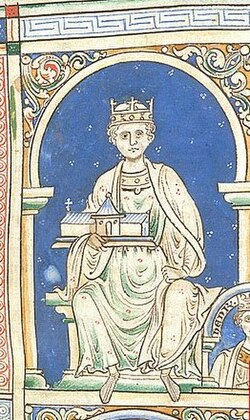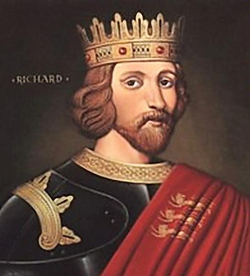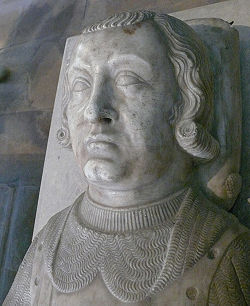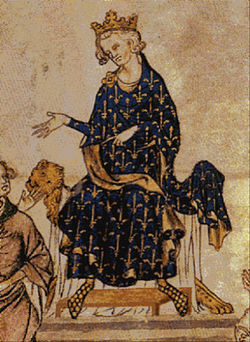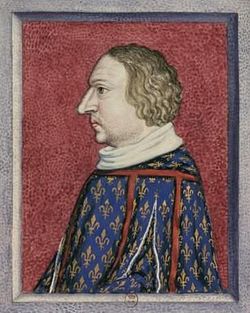| County/Dukedom of Anjou | |
|---|---|
  Coat of arms of the Dukes of Anjou. | |
| Creation date | 861 (county) 1360 (dukedom) |
| Peerage | Peerage of France |
| First holder | Robert the Strong (county) Louis I (dukedom) |
| Last holder | John the Good (county) Louis Stanislas Xavier of France (dukedom) |
| Status | Extinct |
| Extinction date | 1795 |
The Count of Anjou was the ruler of the County of Anjou, first granted by King Charles the Bald of West Francia in the 9th century to Robert the Strong. Ingelger and his son, Fulk the Red, were viscounts until Fulk assumed the title of count.
Contents
- Counts of Anjou
- Robertian dynasty
- House of Ingelger
- Capetian dynasty
- Dukes of Anjou
- First creation: 1360–1481 – House of Valois-Anjou
- Second creation: 1515–1531 – House of Savoy
- Third creation: 1566–1576 – House of Valois-Angoulême
- Fourth creation: 1576–1584 – House of Valois-Angoulême
- Fifth creation: 1608–1626 – House of Bourbon
- Sixth creation: 1640–1660 – House of Orléans
- Seventh creation: 1668–1671 – House of Bourbon
- 8th creation: 1672 – House of Bourbon
- 9th creation: 1683–1700 – House of Bourbon
- 10th creation: 1710–1715 – House of Bourbon
- 11th creation: 1730–1733 – House of Bourbon
- 12th creation: 1755–1795 – House of Bourbon
- Dukes of Anjou without legal creation
- 1883–present – House of Bourbon
- 2004–present – House of Bourbon-Orléans
- References
- External links
Ingelger's male line ended with Geoffrey II. Subsequent counts of Anjou were descended from Geoffrey's sister Ermengarde and Count Geoffrey II of Gâtinais. Their agnatic descendants, who included the Angevin kings of England, continued to hold the title and territory until King Philip II Augustus seized the region and annexed it to the French crown lands.
In 1360, the county was raised to a dukedom becoming known as Duke of Anjou, subsequently leading the Duchy of Anjou. The title was held by Philip V of Spain before his accession to the throne in 1700. Since then, some Spanish Legitimist claimants to the French throne also claim the title even to the present day, as does a nephew of the Orléanist pretender.







